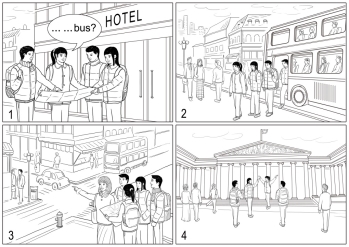题目内容
假设你是红星中学高三学生李华,请根据以下四幅图的先后顺序,介绍你在伦敦冬令营期间与同学们自行前往博物馆的完整过程,并以“My Experience in London”为题,给校刊“英语园地”写一篇英文稿件。
注意:1. 词数不少于60; 2. 开头已给出,不计入总词数。

My Experience in London
Last winter vacation, my classmates and I went to London to attend a winter camp.
_______________________________________________________________________________
_______________________________________________________________________________
_______________________________________________________________________________
_______________________________________________________________________________
_______________________________________________________________________________
_______________________________________________________________________________
练习册系列答案
 亮点激活精编提优100分大试卷系列答案
亮点激活精编提优100分大试卷系列答案
相关题目

